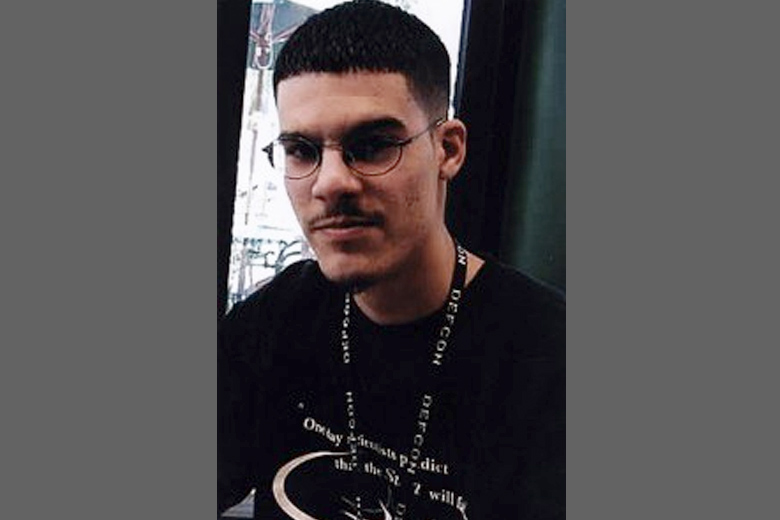On July 16th, Kevin Mitnick, a cult figure from the ’90s and the first person with “computer addiction” to be placed on the FBI’s most-wanted list, passed away. However, as the history shows, he and other well-known hackers contributed less harm to society and, instead, triggered the rapid development of the information security industry.
Kevin Mitnick

Photo: Kevin Mitnick, Source: Wikipedia
Even at the age of 12, Mitnick learned to hack into telephone networks, redirecting calls and playing pranks on others. By 17, he secretly controlled his school’s computers (though he refrained from changing his grades). Later, he breached the secure networks of Pacific Bell, Bell Laboratories, Motorola, and Nokia, leading to several stints in prison. Attempts by his lawyers to justify Mitnick’s actions with a diagnosis of “computer addiction” did not garner sympathy from the court, which saw him as the main threat to the digital society.
In 1994, Mitnick went too far when he hacked into the home computer of the leading information security expert, Tsutomu Shimomura. This severely damaged the Japanese man’s reputation, and Mitnick even left him an insulting voicemail. Catching the offender became a matter of honor for Shimomura, and with the help of the FBI, they tracked Mitnick down using special radio equipment.
Spending four years in prison did little to diminish Mitnick’s public intrigue. He claimed that he once hacked into George Lucas’s computer and read the script for a new “Star Wars” episode. A myth grew around Mitnick, dubbing him the most brilliant cybercriminal in history. However, by the 2000s, when he was released, the digital world had changed significantly, with a new generation of hackers surpassing him.
After his imprisonment, Mitnick turned to consulting on computer security matters. Ironically, his company’s website was hacked several times, and the former hacker #1 became a victim of ageism and trolling by young hackers who saw him as a relic of the ’90s. Nonetheless, for two decades, Mitnick actively delivered lectures and authored books like “The Art of Intrusion” until he passed away at the age of 60 from pancreatic cancer.
Gary McKinnon

Photo: Gary McKinnon, Source: Wikipedia
“I Want to Believe” – this phrase from “The X-Files” has become a slogan for UFO enthusiasts worldwide. However, some require more than just belief; they demand real evidence. Scottish hacker Gary McKinnon, known by the alias “Solo,” was convinced that the US possessed secret information about contacts with extraterrestrial civilizations. In 1997, he hacked into American military computers, and three years later, into NASA servers. While he found no evidence of UFOs, he was eventually found himself…
After his arrest by British authorities, the US sought his extradition, claiming he caused $800,000 worth of damage. He faced the possibility of 70 years in prison, and rumors circulated about him being sent to the infamous Guantanamo Bay. However, McKinnon was later diagnosed with Asperger’s syndrome, and in 2012, then-Prime Minister of the UK, Theresa May, banned his extradition, citing his mental health condition.
Kevin Poulsen

Photo: Kevin Poulsen, Source: Wikipedia
This hacker, known as Dark Dante in the early ’90s, gained fame by hacking into the Los Angeles radio station KIIS-FM. But it wasn’t for requesting his favorite song; instead, he made himself the winner of numerous valuable prizes, including a Porsche 944 sports car. Later, Poulsen breached the FBI’s database, where telephone call interception data was stored. He was quickly caught and sentenced to five years in prison. Upon his release, he became the first American ever banned from using computers and the internet.
However, Poulsen changed during his time in prison. In 2004, his exemplary behavior was finally recognized, and after receiving permission to use a computer again, he pursued journalism and even helped catch criminals. In 2006, Poulsen conducted an investigation, revealing how hundreds of pedophiles used MySpace to target victims. One of them, Andrew Lubrano, who attempted to lure a 14-year-old boy, was arrested as a result.
Albert Gonzalez

Photo: Albert Gonzales, Source: Wikipedia
Hackers like Albert Gonzalez struck fear into anyone with a bank account. Between 2005 and 2007, he orchestrated the theft of 170 million credit card and financial institution account data, including client passwords, private addresses, and phone numbers. This heist remains the largest of its kind in history.
Before his capture, Gonzalez lived lavishly, once spending $75,000 on a birthday party for himself. On another occasion, he complained to friends about having to manually count $340,000 because his cash counter had broken. When finally caught, the court seized $1.6 million (some of which was buried in his parents’ backyard), his luxurious Miami home, a BMW 330i, a Glock 27 pistol, a Tiffany diamond ring, and several Rolex watches.
In court, Gonzalez tried the same tactic as McKinnon, pleading for leniency due to Asperger’s syndrome. However, what might have worked in the UK did not work in the US. Besides, comparing a romantically-minded Scottish autistic individual searching for UFOs to a cybercriminal engaged in the mundane theft of millions of banking data was an unjust comparison.
Аaron Swartz

Photo: Aaron Swartz, Source: Wikipedia
There are hackers, and then there are hacktivists. While they may share similar skills, hacktivists engage in hacking not for profit or entertainment, but to advance political ideas. Hacktivism can take the form of cyber terrorism (which is often criticized in the case of Anonymous) or serve as a means to fight for freedom of speech, human rights, and unrestricted access to information.
One of the most prominent hacktivists was Aaron Swartz. At the age of 14, he became a co-author of the RSS 1.0 specification, and at 15, he befriended internet law theorist Lawrence Lessig, who involved him in working on Creative Commons (alternative copyright licenses). After high school, Swartz briefly attended Stanford University but dropped out to launch Infogami, a startup that later merged with the popular website Reddit.
Swartz’s primary concern was the issue of free access to information. In 2011, he secretly connected to the Massachusetts Institute of Technology’s internet terminal to download 4.8 million documents from the academic archive JSTOR (universities pay tens of thousands of dollars annually for access to this library). Swartz planned to release all these documents into the public domain but was arrested by the police.
The hacktivist faced the prospect of 35 years in prison and a million-dollar fine. However, when offered a plea deal (just six months in jail), he decided to go to trial. The trial was scheduled to begin in February 2013, but on January 11, Swartz, who was out on bail and left no suicide note, took his own life. In the same year, he was posthumously inducted into the Internet Hall of Fame.
Source: The Gaze







